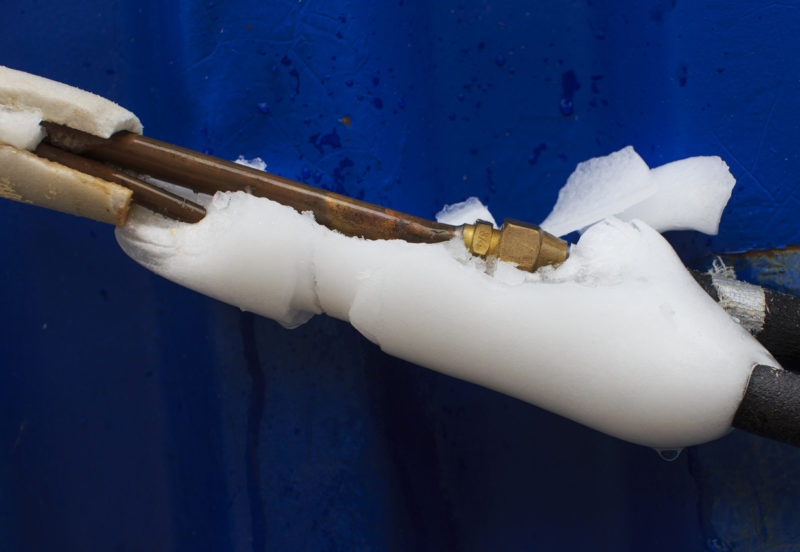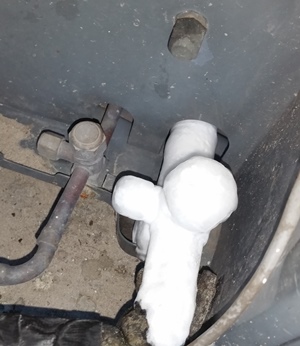Troubleshooting a Frozen AC Pipe - Effective Fixes for House Cooling Systems
Troubleshooting a Frozen AC Pipe - Effective Fixes for House Cooling Systems
Blog Article
Right here down the page you'll find a good deal of quality advice on the subject of What Do I Do If My AC Pipe Is Frozen.

Intro
Discovering that your air conditioner pipeline is frozen can be concerning, especially throughout hot summertime when you depend on your air conditioning system the most. Comprehending what to do in such a scenario is crucial to avoid additional damages to your cooling system and guarantee your convenience inside your home.
Comprehending the Causes
Several variables can add to the freezing of an air conditioning pipeline. Comprehending these causes can aid you attend to the issue effectively.
Absence of Airflow
One common source of a frozen air conditioner pipe is inadequate air movement. When the airflow over the evaporator coil is limited, it can cause the coil to drop below freezing temperature level, leading to ice formation on the pipeline.
Low Refrigerant Levels
Inadequate cooling agent levels in your a/c system can additionally result in a frozen pipeline. Reduced refrigerant levels can trigger the stress in the system to go down, leading to the freezing of wetness on the evaporator coil.
Winter Conditions
In cooler environments, freezing temperature levels outside can contribute to the freezing of a/c pipelines. If your AC system is not correctly protected or if there are leaks in the ductwork, cold air can infiltrate the system, creating the pipe to freeze.
Dirty Air Filters
Unclean or clogged air filters can restrict air flow in your air conditioner system, bring about numerous problems, including a frozen pipeline. It's important to replace or clean your air filterings system regularly to make certain appropriate airflow and protect against ice accumulation.
Signs of a Frozen A/c Pipe
Acknowledging the indicators of a frozen air conditioner pipe is crucial for timely activity.
Decreased Airflow
If you see a considerable decline in airflow from your vents, it might show a frozen pipe.
Ice Buildup on the Pipe
Noticeable ice buildup on the refrigerant line or the evaporator coil is a clear indicator of an icy AC pipe.
Odd Sounds from the Unit
Uncommon audios, such as hissing or bubbling, coming from your a/c system can signify that there's ice existing on the pipeline.
Immediate Actions to Take
When confronted with an icy AC pipe, it's essential to act rapidly to avoid further damage to your cooling system.
Turning off the AC
The first step is to turn off your a/c to avoid the system from running and exacerbating the concern.
Looking for Blockages
Inspect the location around the indoor unit for any type of blockages that may be blocking air movement, such as furniture or drapes.
Thawing the Pipe
You can use gentle methods like placing towels taken in warm water around the frozen pipeline to help thaw it gradually.
Preventive Measures
Taking safety nets can aid prevent future events of a frozen AC pipe.
Routine Maintenance Checks
Set up normal upkeep consult an expert HVAC service technician to make sure that your air conditioner system is running successfully.
Transforming Air Filters
Regularly change or cleanse your air filters to avoid air flow restrictions and keep optimum performance.
Insulating Exposed Pipes
If your AC pipelines are subjected to cold temperature levels, think about protecting them to prevent cold throughout cold weather.
Looking For Professional Help
If DIY techniques fail to resolve the concern or if you're not sure regarding how to continue, it's finest to seek help from a qualified HVAC technician.
When DIY Methods Fail
If your efforts to thaw the pipe or address various other issues are not successful, it's time to call in a specialist.
Significance of Hiring a Professional HVAC Technician
A licensed HVAC service technician has the know-how and tools needed to identify and fix issues with your air conditioner system safely and effectively.
Final thought
Taking care of an icy a/c pipeline can be a discouraging experience, however understanding exactly how to respond can aid decrease damages and bring back comfort to your home. By recognizing the reasons, recognizing the signs, and taking punctual action, you can effectively resolve the problem and prevent future events.
What to Do If Your AC Line Is Frozen
Make Sure All Supply and Return Air Vents Are Open
If you notice problems with airflow, the first thing you should do is check your supply and return vents. Supply vents distribute clean, conditioned air throughout your home. As this air becomes stale, it’s pulled into the return vent, where it’s reconditioned before being sent back out through the supply vent.
When these vents are closed, air won’t flow in the home. Before examining your AC, check the vents in every room and ensure they’re all open.
Check for a Dirty Air Filter
Another possible cause of limited airflow is a dirty air filter. Your air conditioner’s filters catch elements you don’t want to breathe in, such as dirt and dust. Over time, filters can become clogged, ultimately blocking air from flowing in and out. The lack of airflow can then cause the entire coil to freeze and will completely restrict any air from moving through it. The AC may need to be powered off for one to two days to allow the coil to thaw after replacing the filter to allow proper functioning of the unit. This debris can also accumulate on your AC’s evaporator coil, requiring a more serious repair. In general, air filters should be cleaned regularly (about every two weeks).
Assess Your Outdoor Unit
In addition to checking your AC, assessing the outdoor unit is a good idea. Also known as the condensing unit, it works with your interior unit to release heat outside. An issue with the outdoor unit can result in rising internal temperatures.
Overgrown Shrubs or Clogged Leaves
From leaves and twigs to shrubs and debris, there’s no shortage of outdoor elements that can accumulate around your condensing unit. When these elements get lodged inside the unit, they can block airflow. Fortunately, removing the blockage can solve the problem.
Sounds of a Broken Fan
Shrubs and leaves aren’t the only things that can impede your outdoor unit’s airflow. If the fan is broken, the unit won’t be able to properly get rid of heat — which means the internal temperature won’t go down. First, make sure the fan is spinning. If it is, check for the following sounds of a broken fan:
Buzzing Rattling Screeching Hissing Clicking Preventative Measures
Nobody wants to deal with a frozen AC line. In addition to causing problems with your air conditioner, they require professional repairs. On the bright side, there are preventative measures you can take to help ensure this issue doesn’t arise in the first place.
https://www.coopergreenteam.com/blog/what-to-do-if-ac-line-frozen

We are very inquisitive about How can I fix an air conditioner’s frozen pipe? and I am assuming you enjoyed reading the entire blog post. If you enjoyed our blog entry plz make sure you remember to share it. Thanks a bunch for your time. Kindly visit our website back soon.
Click Here Report this page